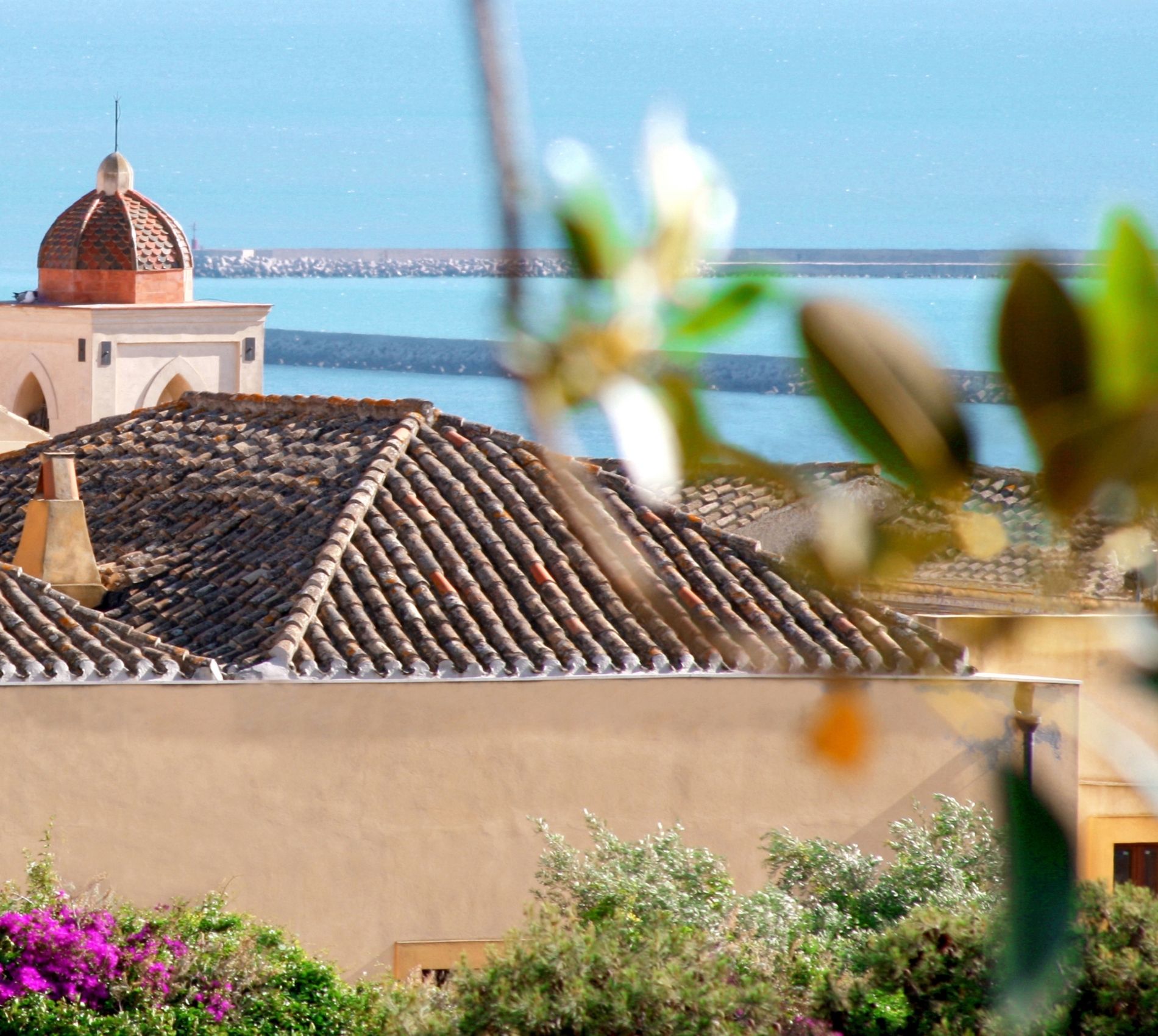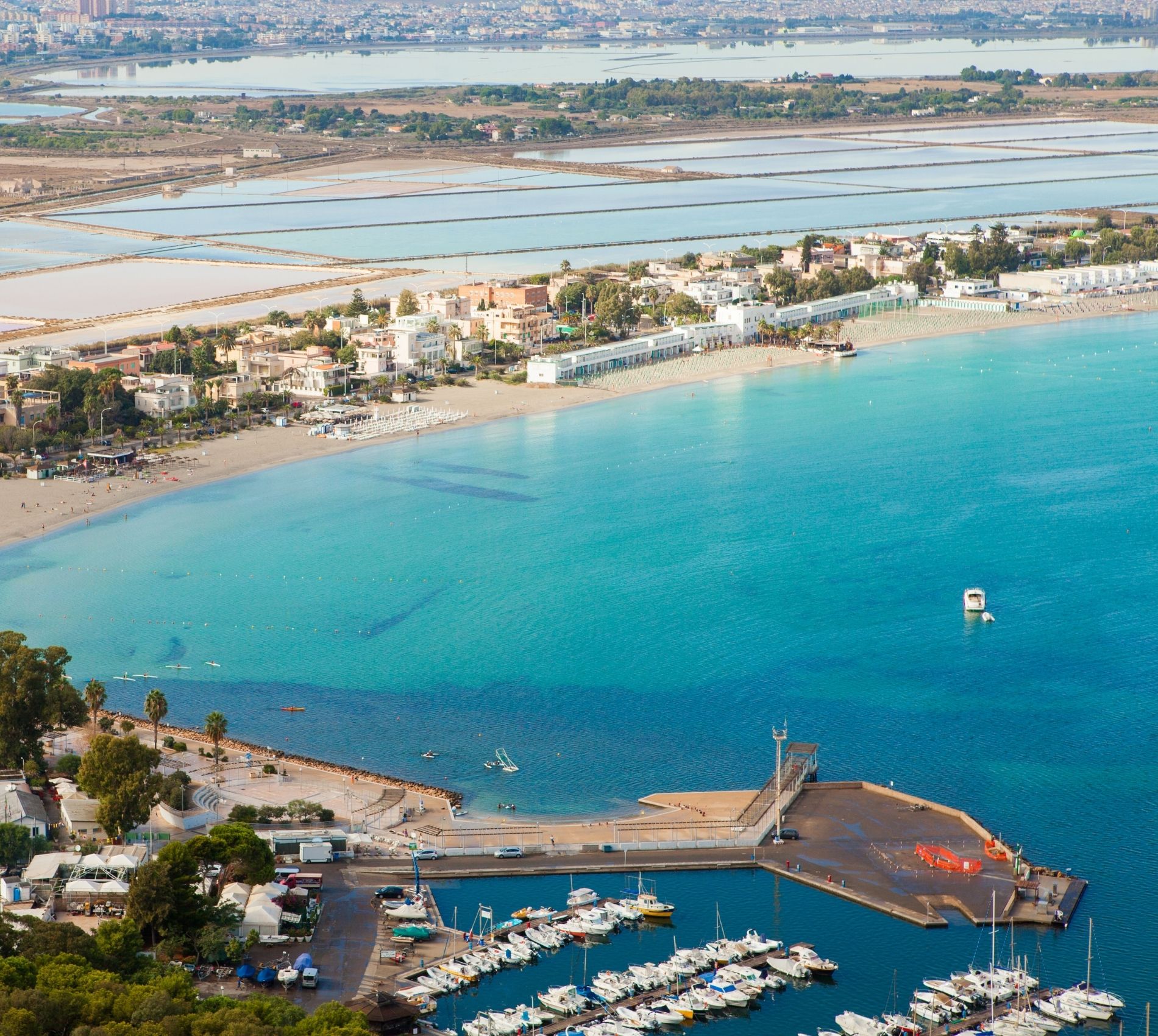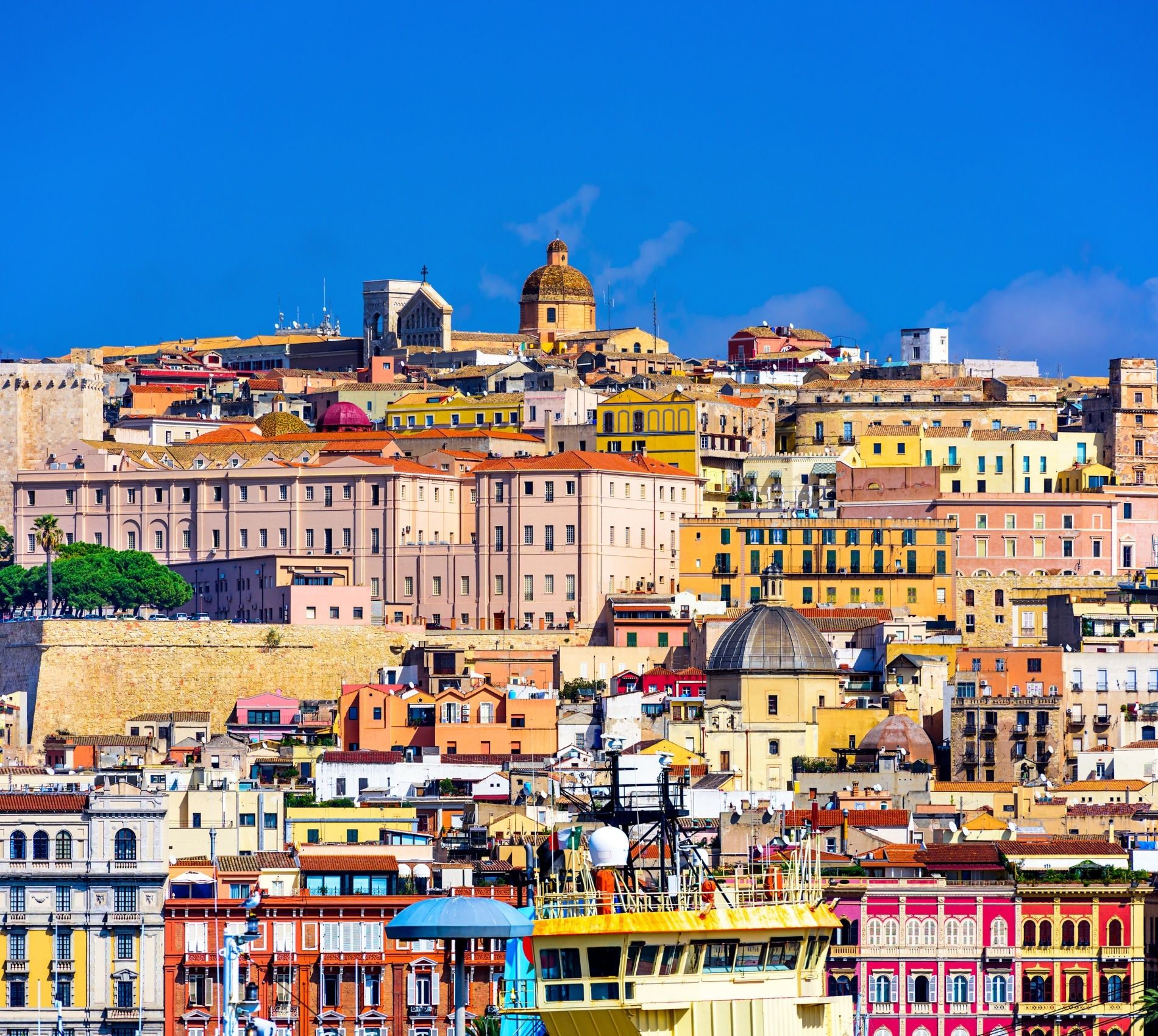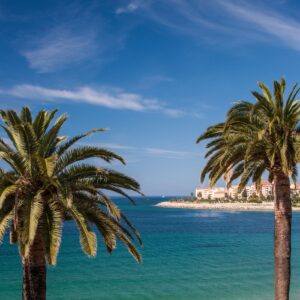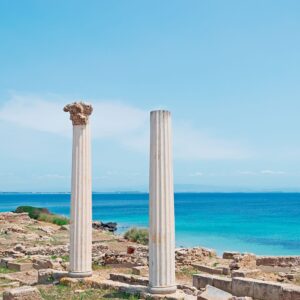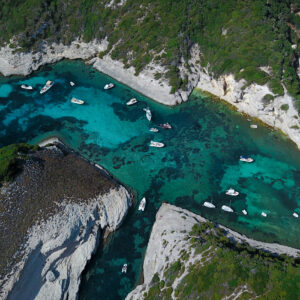Administration capital of Sardinia and main harbour of the island. It has been inhabited since prehistory, as you can see from the tracks of sea cultures, which were found in the adjacent lagoons. It was the main destination of all foreign rules, of which it keeps signs from each epoch and culture. So you can find – and they are well fitted in the city picture – Punic necropolis, Roman remains (the Amphitheatre, the Villa of Tigelius, the caves of the Viper), Pisan Walls and towers (the Elephant Tower and the San Pancrazio Tower), Aragon and Spanish bastions, strongholds of Piedmont in the old district Castello and interesting churches like the pre-Christian church San Saturno, the Pisan- Roman Cathedral, the baroque church San Michele and finally S. Domenico with the magnificent Monastery. The old city centre has got interesting aspects, which both deal with architecture and active commerce. Since 1648 Cagliari has been the seat of a University and it is a very active cultural centre (citadel of museums, City Art Gallery, picture-gallery). Particularly interesting is the Archaeological Museum, which contains Roman-Punic remains, but also a very detailed collection of pieces from the culture of nuraghi. Near Cagliari, in the wetlands Molentargius and Santa Gilla you can admire pink Flamingos.
If you are in Cagliari or surroundings on May, 1, you should not miss the Procession of Sant’Efisio. The procession is a mixture of Holy and Profane and it attracts thousands of tourists. On a vow of the Commune Cagliari, the Sant’Efisio Statue (a Roman fighter, who converted into Christianity at the time of Emperor Diocletian) has been taken for four centuries on a decorated coach to Nora every year; there a small church was built on the place of the martyrdom, dedicated to the Saints. The procession begins in the district Stampace and it is formed by thousands of men, women and children, who come on this occasion from all over Sardinia and are dressed with their popular costumes. The procession goes on slowly for hours accompanied by the enthusiastic people on foot or on bullock barrows (Traccas). The Sant’Efisio Statue stays in Nora three days long, then it is brought back to Cagliari, where the procession ends with popular celebrations and fireworks.
Full-day – Duration Approx. 6 hours

